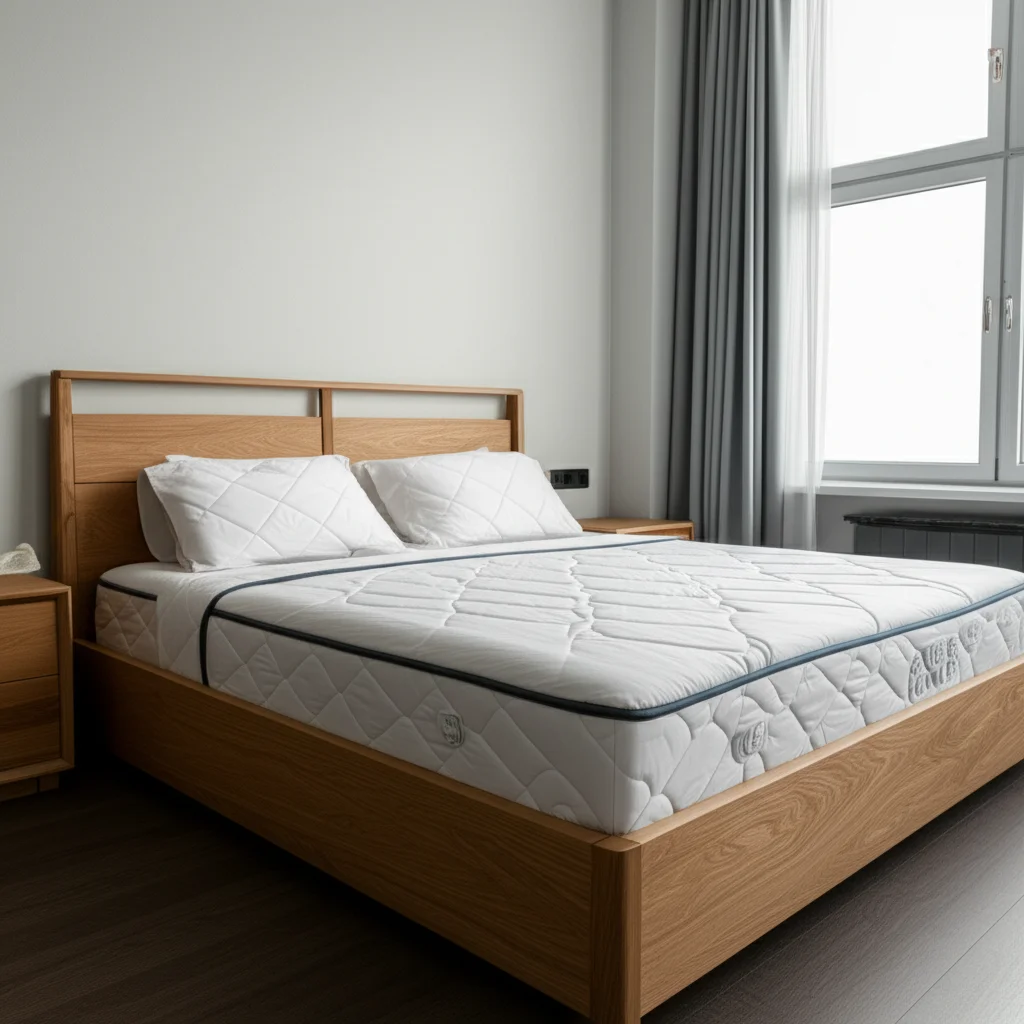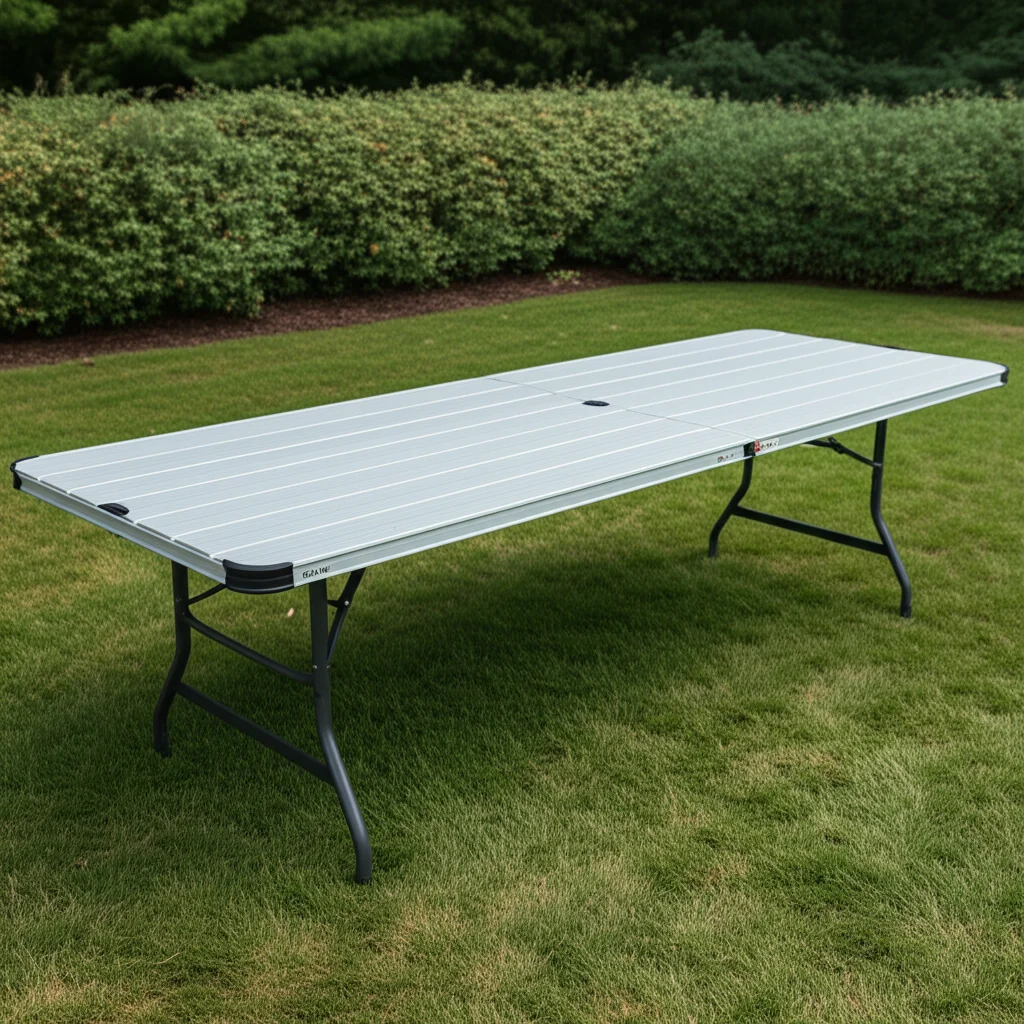· Davia Murnell · Home Essentials · 20 min read
How To Figure Out What Size Window Air Conditioner You Need

Pick the Right Window AC Size for Cool Comfort
Is your home too hot? Perhaps you stand in front of a fan, dreaming of cool air. I understand that feeling. Choosing a window air conditioner often feels like a guessing game. Many people just pick the first unit they see or one that looks powerful. However, the right window air conditioner size makes a big difference. It impacts your comfort, energy bills, and how long the unit lasts.
Picking the wrong size can lead to discomfort and wasted money. An undersized unit struggles to cool your room. An oversized unit cools too quickly, then cycles off, leaving your room humid. This guide helps you understand how to figure out what size window air conditioner you need. We will cover key terms like BTUs, how to measure your space, and what other factors influence your choice. By the end, you will pick an AC unit with confidence.
Takeaway: Get the Right AC Size
- Measure Accurately: Find your room’s square footage first. This is the base for AC sizing.
- Understand BTUs: British Thermal Units (BTUs) show an AC’s cooling power. Match BTUs to your room size.
- Consider Heat Sources: Factor in windows, sunlight, insulation, people, and appliances. These add heat.
- Avoid Mistakes: Do not buy an AC that is too big or too small. Both cause problems.
- Use a Checklist: Follow a simple step-by-step process to make your final choice.
To figure out what size window air conditioner you need, calculate your room’s square footage first. Then, use this number to determine the necessary British Thermal Units (BTUs). A general rule is 20 BTUs per square foot, but adjust for heat-generating factors like sunlight, insulation, and the number of people in the room.
Understanding BTU: The Core of Your AC’s Cooling Power
When you look for a window air conditioner, you will see “BTU” numbers. BTU stands for British Thermal Unit. It is a measure of heat. For air conditioners, BTUs tell you how much heat the unit can remove from a space in one hour. A higher BTU number means a unit has more cooling power.
Think of it like this: If your room is very hot, you need a powerful AC to pull out all that heat. That power is measured in BTUs. Matching the correct BTU rating to your room size is the most important step. An AC unit that is too small cannot cool the room effectively. It will run constantly and still not reach your desired temperature. This wastes energy and wears out the unit fast.
On the other hand, an AC unit that is too large also causes problems. It will cool the room very quickly. Then, it will shut off before it has a chance to remove humidity from the air. This leads to a cold but clammy room. You might feel sticky and uncomfortable. An oversized unit also cycles on and off frequently, which is less energy-efficient. It also puts more stress on the compressor. My goal is for you to understand this balance. The right BTU ensures comfortable temperatures and proper dehumidification.
Common window AC units range from 5,000 BTUs to 25,000 BTUs. Small units work for bedrooms, while larger units can handle living rooms or open spaces. I always tell people not to guess this number. A precise BTU calculation saves you money and provides better comfort. It is the foundation of picking the right window air conditioner.
Measure Your Space Accurately for Proper AC Sizing
Measuring your room is the first practical step in determining your window air conditioner size. You need to find the room’s square footage. This simple calculation gives you the basic information required for BTU recommendations. Without an accurate measurement, any other calculations will be off.
First, grab a tape measure. You need two main dimensions: the length and the width of the room. Measure from wall to wall. Do not include closets or other small alcoves that are not part of the main living space. If your room has an unusual shape, you can break it into smaller rectangles. Measure each section, calculate its square footage, and then add them together.
Here is how to calculate square footage:
- Length (in feet) x Width (in feet) = Square Footage (sq ft)
For example, if your room is 10 feet long and 15 feet wide, the calculation is 10 ft x 15 ft = 150 sq ft. This 150 sq ft number is your starting point. You will use this number with a general guideline for BTUs. A common estimate is 20 BTUs per square foot. So, a 150 sq ft room would need approximately 3,000 BTUs (150 sq ft * 20 BTUs/sq ft). However, this is just a base.
This base calculation gives you a good starting range. But rooms are not all the same. A room with many windows or in direct sunlight will need more cooling power. A room with good insulation might need slightly less. I always advise people to be precise with their measurements. Even a few feet off can mean the difference between a perfectly cooled room and one that never quite feels right. Getting this step right builds a solid foundation for your AC choice. It helps you pick the right window air conditioner for efficient cooling.
Account for Heat Sources: What Makes a Room Hotter?
Your room’s square footage provides a base BTU estimate. However, other factors create heat in a room. You must account for these heat sources to pick the correct window air conditioner size. Ignoring them can lead to an undersized AC unit. This means your AC unit runs constantly but fails to cool your space properly. In some cases, a continuously running unit might not be cooling effectively due to other issues, which you can read more about here: Why Is My Window Air Conditioner Running But Not Cooling The House?.
Let’s look at common heat sources:
- Windows and Sunlight: Windows let in sunlight, which generates significant heat.
- Rooms with many windows, especially those facing south or west, gain a lot of heat.
- Add 10% to the base BTU estimate for a sunny room.
- If you have shaded windows or use thick curtains, you might not need as much of an increase.
- Insulation Quality: Your walls and attic insulation play a big role.
- Well-insulated rooms hold cool air better, requiring less BTU power.
- Poorly insulated rooms or older homes leak cool air and let in more heat. You might need to increase your BTU estimate by 10-15%.
- Number of Occupants: People generate body heat.
- The BTU calculation usually assumes two people in a room.
- For each additional person regularly occupying the room, add 600 BTUs to your total. For example, a living room with four people consistently present needs an extra 1,200 BTUs.
- Heat-Generating Appliances: Electronics and lights contribute to room temperature.
- Televisions, computers, gaming consoles, and even incandescent light bulbs produce heat.
- For a room with several large electronics, add 1,000-2,500 BTUs depending on their usage. Kitchens, with ovens and stovetops, also need higher BTU units.
- Ceiling Height: Standard calculations assume 8-foot ceilings.
- If your room has higher ceilings (9 feet or more), the volume of air is greater.
- Increase your BTU estimate by 10-20% for high ceilings to account for the larger air volume that needs cooling.
Considering these factors helps you make a more precise choice. It moves you beyond a basic square footage calculation. My aim is to help you select a window AC that cools your space efficiently, even with these extra heat loads.
Special Room Types Need Unique AC Sizing
Not all rooms are equal when it comes to cooling. Some spaces have unique characteristics that demand a different approach to window air conditioner sizing. Failing to consider these special cases can lead to poor cooling performance, even if your initial square footage calculation was correct. I want to highlight these unique situations to help you pick the right window air conditioner.
Kitchens: High Heat Zones
Kitchens are notorious for generating heat. Ovens, stovetops, dishwashers, and refrigerators all release warmth into the air. Even when not in use, kitchen appliances can hold residual heat. Cooking activity dramatically increases the room’s temperature and humidity. For this reason, a kitchen typically needs a much larger AC unit than a living room of the same size.
- Recommendation: For kitchens, increase your calculated BTU requirement by at least 4,000-6,000 BTUs. Some experts suggest even doubling the base BTU for a heavily used kitchen. It ensures the unit can overcome the significant heat load from cooking. A common issue with undersized AC units is that they run constantly and fail to properly dehumidify, which could also lead to issues like why your window air conditioner keeps running after you turn it off.
Open-Concept Living Spaces
Open-concept homes combine living rooms, dining areas, and kitchens into one large space. This design creates a cooling challenge. A single window AC unit might not be effective for the entire area.
- Recommendation:
- Calculate the total square footage of the entire open space. This is crucial.
- Consider using multiple smaller window AC units in different sections, or a single very large unit if the layout permits good airflow.
- You might need a unit with a higher BTU than a simple sum of the individual room BTUs. This is because air circulates freely, and heat can spread easily.
- Think about air movement. Can the AC unit reach all corners? Sometimes, a ceiling fan helps distribute cool air.
Rooms with High Ceilings
Standard BTU calculations assume an 8-foot ceiling height. If your room has vaulted ceilings or ceilings higher than 8 feet, you have a greater volume of air to cool.
- Recommendation: For every foot of ceiling height above 8 feet, increase your total BTU requirement by approximately 10-15%. For example, a 10-foot ceiling in a 200 sq ft room would need roughly 25% more BTUs than a room with an 8-foot ceiling of the same area. This accounts for the extra cubic feet of air.
By paying attention to these specific room characteristics, you can make a more informed choice. This approach prevents common sizing errors. It helps you achieve optimal comfort and efficiency for every part of your home.
Climate and Insulation: How They Affect AC Needs
The climate where you live and the insulation quality of your home play critical roles in determining the right window air conditioner size. These factors influence how much heat your home gains from the outside. Understanding them ensures your AC unit works efficiently, not constantly.
Local Climate Conditions
Different climates put different demands on an AC unit.
- Hot and Humid Climates: If you live in a hot, humid region, your AC unit needs to work harder. It not only removes heat but also extracts a lot of moisture from the air. High humidity makes temperatures feel hotter. It also creates a sticky, uncomfortable environment. In these areas, you might need to increase your calculated BTU requirement by 10-15%. This extra power helps the unit manage both temperature and humidity effectively.
- Hot and Dry Climates: In hot but dry areas, the main challenge is high temperatures. Humidity is less of a concern. Your standard BTU calculation might be more accurate here. However, intense direct sunlight can still significantly impact heat gain.
- Moderate Climates: If your summers are mild, you might be able to stick closer to the base BTU calculation. Some people in moderate climates even choose a slightly smaller unit if they only need occasional cooling.
My advice is to consider your average summer temperatures and humidity levels. Look at climate data for your region. This insight helps you make a more informed decision about your AC’s cooling power.
Home Insulation Quality
Insulation acts as a barrier against heat transfer. Good insulation keeps heat out in summer and heat in during winter. Poor insulation allows heat to easily seep into your home.
- Well-Insulated Homes: Homes with good wall and attic insulation retain cool air better. They lose less cool air to the outside. This means you might be able to use a slightly smaller AC unit or stay closer to the base BTU recommendation. You save on energy costs because the AC does not have to run as hard or as often.
- Poorly Insulated Homes/Older Homes: Older homes often have less insulation or outdated windows. They are prone to air leaks. Heat enters easily, and cool air escapes quickly. In these cases, you will likely need a larger AC unit. Increase your calculated BTU requirement by 10-20% to compensate for the higher heat gain. My own experience in older homes taught me the importance of this. An undersized unit in a leaky house will simply never cool the space adequately.
Consider having an energy audit if you suspect poor insulation. Improving insulation can reduce your AC needs and save significant energy in the long run. Proper insulation helps your AC work efficiently, regardless of its size.
The Problems with Wrong Window AC Sizes
Choosing the wrong window air conditioner size leads to many problems. These issues affect your comfort, energy bills, and the lifespan of your unit. I often see people make this mistake. They either buy an AC that is too big or one that is too small. Both scenarios are less than ideal.
Consequences of an Oversized AC Unit
An oversized AC unit has too much cooling power for your space.
- Short Cycling: The unit cools the room very quickly. It reaches the set temperature and shuts off rapidly. This is called “short cycling.” The AC turns on and off too frequently.
- High Humidity: Short cycling is a major problem for humidity control. Air conditioners remove humidity as they run. When an oversized unit turns off too soon, it does not run long enough to properly dehumidify the air. Your room feels cold but sticky and damp. This creates an uncomfortable environment and can promote mold growth.
- Increased Energy Costs: Despite cooling fast, an oversized unit is not energy efficient. The constant starting and stopping uses more energy than a unit that runs for longer, more consistent cycles.
- Reduced Lifespan: The frequent cycling puts a lot of stress on the compressor, which is the heart of the AC unit. This wears out components faster, leading to more frequent repairs or a shorter overall lifespan for the unit. You might even find your unit not cooling as well as it used to, which could be related to component wear: Why Is My Window Air Conditioner Not As Cold As It Used To Be?.
Consequences of an Undersized AC Unit
An undersized AC unit does not have enough cooling power for your space.
- Ineffective Cooling: The unit struggles to lower the temperature to your desired level. It might run continuously but never quite get the room truly cool. You end up with a warm, uncomfortable room.
- Constant Running (Overworking): An undersized unit runs almost non-stop trying to cool the room. This constant operation puts extreme strain on the motor and other parts. It also leads to high energy bills.
- High Energy Bills: A unit that runs all the time consumes a lot of electricity. Your energy costs will skyrocket. It is a common misconception that a smaller unit always saves money. If it is undersized, it costs more.
- Reduced Lifespan: Like an oversized unit, constant operation leads to faster wear and tear. Components burn out sooner. You face premature breakdowns and the need for early replacement.
- Poor Dehumidification: Even though it runs constantly, an undersized unit might not dehumidify properly. It cannot keep up with the heat and moisture load of the room. This leaves your room feeling muggy.
My goal is for you to avoid these issues. Taking the time to calculate the right window air conditioner size prevents frustration and saves you money in the long run. It ensures your unit performs as it should.
Your Step-by-Step Guide to Sizing a Window AC Unit
Now that we have covered the key factors, let’s put it all together into a clear, actionable plan. This step-by-step guide helps you accurately figure out what size window air conditioner you need. Following these steps ensures you pick a unit that provides optimal comfort and efficiency for your space.
Step 1: Measure Your Room’s Square Footage
This is your foundation.
- Action: Use a tape measure to find the length and width of the room you want to cool.
- Calculation: Multiply the length by the width to get the square footage (Length x Width = Sq Ft).
- Example: A room 12 feet long and 10 feet wide is 120 sq ft.
Step 2: Determine Your Base BTU Requirement
Use the common rule of thumb for initial sizing.
- Action: Multiply your room’s square footage by 20 BTUs per square foot.
- Calculation: Square Footage x 20 BTUs/Sq Ft = Base BTUs.
- Example: For a 120 sq ft room, 120 sq ft * 20 BTUs/Sq Ft = 2,400 Base BTUs.
Step 3: Adjust for Heat-Generating Factors
This is where you fine-tune the BTU estimate based on your specific room and home conditions.
- Windows/Sunlight: If the room is very sunny or has many windows, increase the base BTUs by 10%.
- Calculation: Base BTUs x 0.10. Add this to your Base BTUs.
- Occupancy: For every person regularly in the room beyond two, add 600 BTUs.
- Calculation: (Number of extra people) x 600 BTUs. Add this to your running total.
- Appliances/Electronics: If the room has many heat-generating devices (TV, computer, kitchen appliances), add 1,000-2,500 BTUs. For a kitchen, consider an additional 4,000-6,000 BTUs.
- Calculation: Add appropriate BTUs.
- Insulation: If your home has poor insulation, or is older, add 10-20% to your base BTUs.
- Calculation: Base BTUs x 0.10 to 0.20. Add this to your running total.
- Ceiling Height: For ceilings taller than 8 feet, add 10-15% for each additional foot of height.
- Calculation: (Base BTUs) x (0.10 to 0.15 for each extra foot). Add this to your running total.
Step 4: Calculate Your Final BTU Requirement
Add up your base BTUs and all the adjustments.
- Action: Sum all the numbers from Steps 2 and 3.
- Result: This gives you a more accurate total BTU range needed for your window AC unit.
- Example Continuation: If the 120 sq ft room is sunny (240 BTU extra) and has one extra person (600 BTU extra), your total would be 2,400 + 240 + 600 = 3,240 BTUs. You would then look for a unit in the 3,000-3,500 BTU range.
Step 5: Choose a Unit Within the Recommended BTU Range
Once you have your final BTU number, look for window AC units that match.
- Action: Shop for units with BTU ratings close to your calculated figure.
- Consider: It is generally better to be slightly over rather than significantly under the required BTU, especially if you fall between two common unit sizes. However, avoid a unit that is excessively oversized.
By following this process, you gain confidence. You make an informed decision. This ensures your new window air conditioner provides effective and efficient cooling. This approach makes sure you select the right window air conditioner for your home’s needs.
Improve Efficiency and Comfort with Smart AC Features
Once you have determined the correct window air conditioner size in BTUs, you can explore features that boost comfort and energy efficiency. Modern window AC units offer more than just basic cooling. Understanding these features helps you make a smarter purchase. They can also help you save money on your energy bills in the long run.
Energy Efficiency Rating (EER)
- What it is: The Energy Efficiency Ratio (EER) measures how efficiently an AC unit cools. It calculates the cooling output (BTUs) divided by the power input (watts) when the outside temperature is 95°F and the inside temperature is 80°F.
- Why it matters: A higher EER means the unit uses less electricity to produce the same amount of cooling. This translates directly to lower energy bills for you.
- Recommendation: Look for units with an EER of 10.0 or higher. ENERGY STAR certified units often have EER ratings of 10.8 or higher. Choosing an efficient unit is just as important as choosing the right size. For more information on efficient operation, you can explore general AC maintenance here: How To Clean Air Conditioner.
Smart Features and Controls
Modern window AC units come with a range of smart capabilities.
- Digital Thermostats: These allow you to set precise temperatures. They are more accurate than old-fashioned dial controls. This precision helps maintain comfort and saves energy.
- Remote Controls: Many units include remote controls. This lets you adjust settings from across the room. It adds convenience.
- Programmable Timers: Timers allow you to schedule when the AC turns on and off. You can set it to cool your room before you arrive home from work. Or you can have it turn off automatically after you fall asleep. This prevents the unit from running unnecessarily.
- Sleep Mode: This feature gradually raises the temperature a few degrees overnight. It saves energy while you sleep. The slight temperature increase is usually not noticeable during sleep.
- Eco Mode/Energy Saver Mode: This mode cycles the fan and compressor on and off. It keeps the room within a comfortable temperature range without continuous operation. This helps save energy when peak cooling is not needed.
Fan Speeds and Airflow Direction
- Multiple Fan Speeds: Units with multiple fan speeds (low, medium, high) give you better control over airflow and noise. Low speed is good for quiet operation and light cooling. High speed moves more air for faster cooling.
- Adjustable Louvers: Louvers direct the airflow. Being able to adjust them horizontally and vertically ensures cool air reaches all parts of the room. Proper airflow distribution helps the unit cool more evenly and efficiently.
By combining the correct BTU size with energy-efficient features and smart controls, you maximize your comfort. You also minimize your environmental impact and energy expenses. This strategic approach ensures your window AC unit serves you well for years to come.
FAQ Section
How do I calculate the square footage of my room?
To calculate the square footage, measure the length and width of your room in feet. Then, multiply these two numbers together. For example, a room that is 10 feet long and 12 feet wide has a square footage of 120 sq ft (10 ft x 12 ft = 120 sq ft). This measurement provides the base for figuring out your AC needs.
What is a BTU, and why is it important for AC sizing?
BTU stands for British Thermal Unit. It measures the amount of heat an air conditioner can remove from a room in one hour. A higher BTU rating means more cooling power. It is important because matching the BTU to your room size ensures efficient cooling. Too few BTUs means the unit cannot cool the room. Too many BTUs means the unit cycles too often, making the room humid.
What happens if my window AC unit is too big for my room?
If your window AC unit is too big, it will cool the room too quickly. This causes it to shut off before it can remove enough humidity from the air. The room will feel cold but damp and clammy. An oversized unit also cycles on and off frequently, which wastes energy and puts more wear on the compressor, reducing the unit’s lifespan.
What are common heat sources I should consider when sizing an AC?
Common heat sources include windows (especially those facing south or west), insulation quality, the number of people regularly in the room, and heat-generating appliances or electronics (like TVs, computers, or kitchen ovens). Each of these factors adds heat to a room, requiring a higher BTU unit to compensate for the extra heat load.
Should I get a slightly larger BTU unit if I am between sizes?
If your calculated BTU falls between two common window AC sizes, it is generally safer to choose the slightly larger unit. This provides a small buffer for unexpected heat loads, like a very hot day or more people in the room. However, avoid going significantly larger, as this can lead to the issues of an oversized unit, such as high humidity and frequent cycling.
Does the climate I live in affect the AC size I need?
Yes, the climate significantly affects your AC sizing needs. If you live in a hot, humid climate, your AC unit needs to work harder to remove both heat and moisture, often requiring a 10-15% increase in BTUs. In hot, dry climates, the focus is mainly on temperature. Always consider your local average summer temperatures and humidity levels.





